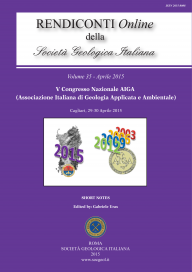
Comparison of bivariate and multivariate analyses for landslide susceptibility mapping in the Phlegraean district: the case study of Camaldoli hill (Napoli, Italy)
Maria Teresa Carratù (a), Diego Di Martire (a), Giovanni Francesco Finicelli (a) & Domenico Calcaterra (a)
(a) Department of Earth Sciences, Environment and Resources , Federico II University of Napoli, Largo San Marcellino, 10, 80138, Napoli, Italy. E-mail: mariateresa.carratu@unina.it
Volume: 35/2015
Pages: 50-53
Abstract
Two methodologies for landslide susceptibility mapping in a Geographical Information System (GIS) environment are here presented. Camaldoli hill, the most prominent peak of the Phlegrean district (458 m a.s.l.), was selected for the model implementation. To this aim, bi- and multivariate approaches were adopted, considering seven possible factors predisposing to landslide occurrence (geology, slope, aspect, land cover, distance to streams, rocky scarps and distance to roads). The susceptibility maps produced with the two methods were then compared and critically evaluated using validation datasets (Receiver Operating Characteristic - ROC curves).
Keywords
Get Full Text